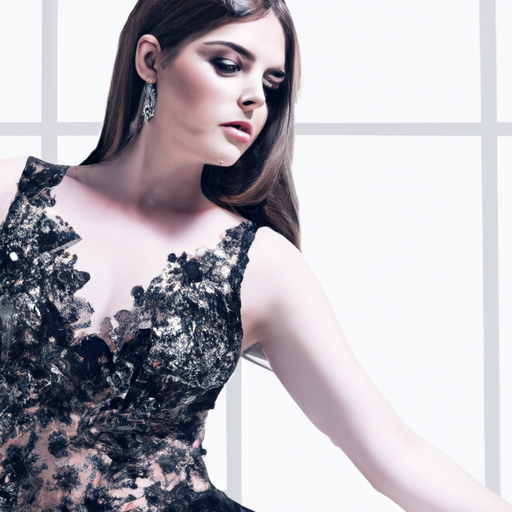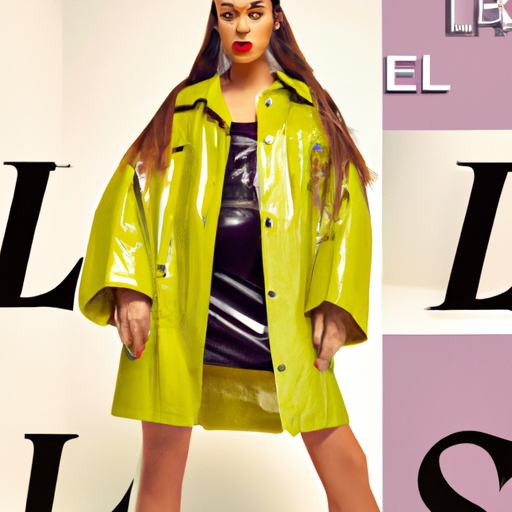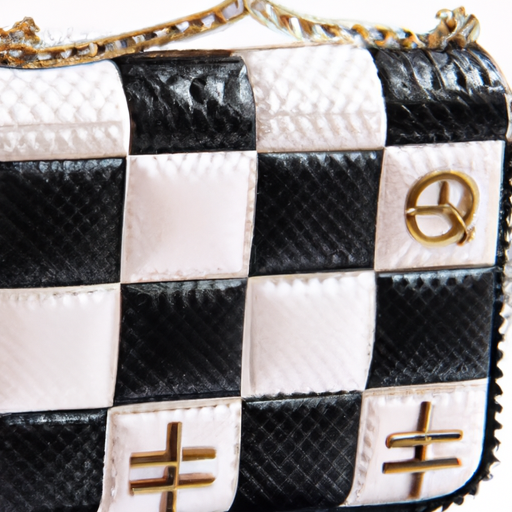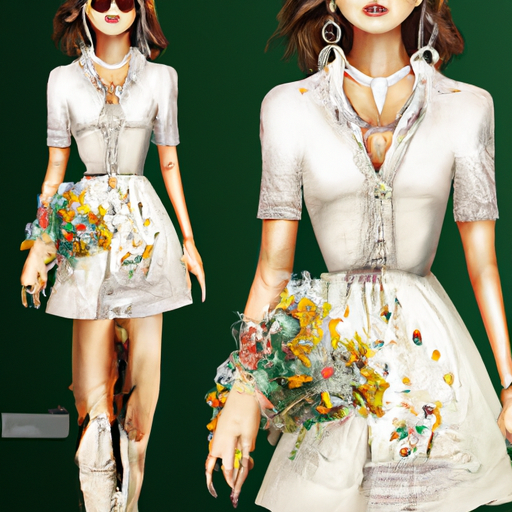Sustainable Fashion Trends
Are you tired of the fast fashion frenzy? Looking to make more conscious choices when it comes to your wardrobe? Look no further! This article will introduce you to the latest sustainable fashion trends that are taking the industry by storm. From eco-friendly fabrics to ethical production practices, you’ll discover a plethora of stylish options that align with your values. Get ready to revolutionize your fashion game without compromising on style. It’s time to embrace sustainability in fashion!
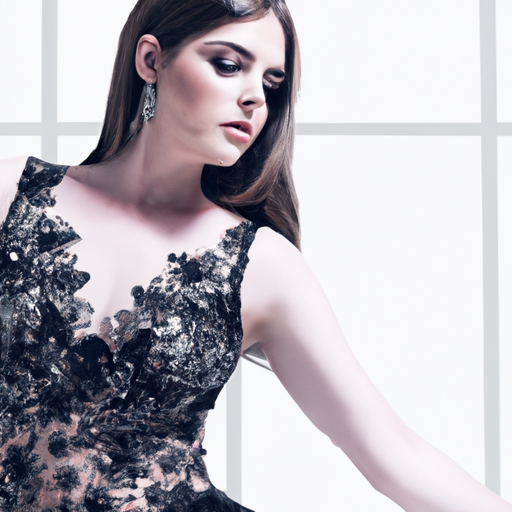
Table of Contents
Ethical Materials
Organic Cotton
Organic cotton is a sustainable alternative to conventional cotton that undergoes strict guidelines and standards to ensure its ethical production. Unlike conventional cotton, which requires massive amounts of water and chemical pesticides, organic cotton is grown without the use of harmful chemicals. By choosing organic cotton, you are supporting environmentally friendly farming practices and protecting the health of farmers and workers.
Recycled Fabrics
Recycled fabrics, also known as upcycled fabrics, are textiles made from pre-existing materials that have been repurposed. This includes fabrics made from recycled plastic bottles, discarded clothing, and textile waste. By utilizing these materials, we minimize waste and the depletion of natural resources. Recycled fabrics not only reduce the environmental impact of the fashion industry but also provide opportunities for creativity and innovation.
Hemp
Hemp is a versatile and sustainable fiber that has been used for centuries. It requires minimal water and pesticides to grow and can be cultivated in diverse climates. Hemp fabric is known for its durability, breathability, and antibacterial properties, making it an excellent choice for sustainable fashion. Choosing hemp products supports the growth of a sustainable industry that benefits both the environment and local communities.
Lyocell
Lyocell, also known as Tencel, is a regenerated cellulose fiber made from wood pulp. It is produced using a closed-loop process, where the chemicals used in the production are recycled and reused. Lyocell is a sustainable and environmentally friendly fabric choice as it requires less energy and water to produce compared to other textiles. It is also biodegradable, making it a great option for reducing fashion waste.
Slow Fashion Movement
The Concept of Slow Fashion
Slow fashion is a movement that encourages consumers to be more mindful of their purchasing choices and the impact they have on the environment and society. It emphasizes quality over quantity, encouraging consumers to invest in well-made, timeless pieces that will last. Slow fashion advocates for transparency in the fashion industry, prioritizing fair wages and working conditions for garment workers, and reducing the overall environmental footprint of the industry.
Sustainable Capsule Wardrobes
A sustainable capsule wardrobe is a collection of essential, versatile pieces that can be mixed and matched to create various outfits. The idea behind a capsule wardrobe is to own fewer but higher-quality items that are worn frequently and durably. By curating a capsule wardrobe, you can minimize impulse buying, reduce waste, and simplify your closet. It also encourages you to be more conscious of your personal style and avoid trend-driven purchases.
Upcycling and Repairing Clothes
Upcycling is the process of transforming discarded materials or garments into new products of higher value. It allows you to get creative and give new life to old, worn-out clothing items. By upcycling, you can reduce waste, save money, and create unique, one-of-a-kind pieces. Repairing clothes is another essential aspect of slow fashion. Instead of immediately discarding a garment with a small tear or missing button, consider repairing it. This simple act can extend the life of your clothes and reduce your environmental impact.
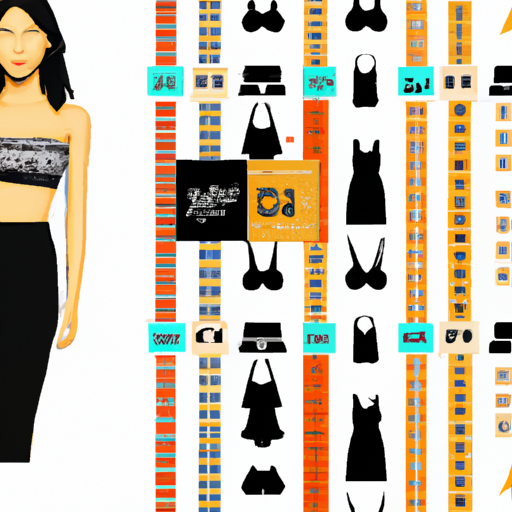
Circular Fashion
Closed-Loop Systems
Closed-loop systems in fashion refer to the process of utilizing waste or recycled materials to create new products. This eliminates the concept of waste, as materials are continuously recycled and reused, creating a circular flow. By embracing closed-loop systems, the fashion industry can significantly reduce its reliance on virgin resources and minimize environmental pollution. Companies are increasingly implementing closed-loop systems to create sustainable and innovative collections.
Renting and Leasing Clothes
Renting or leasing clothes is a growing trend in sustainable fashion. Instead of buying clothes that may only be worn a few times, renting allows you to access a wide range of garments for a specific occasion or period. This reduces the demand for new clothing production and contributes to the circular economy. Renting clothes also enables individuals to experiment with different styles without the long-term commitment and reduces wardrobe clutter.
Clothing Rental Platforms
Clothing rental platforms have emerged as a convenient and sustainable alternative to traditional shopping. These platforms allow you to rent designer clothing and accessories for a fraction of the retail price. By renting from these platforms, you can enjoy high-quality fashion without contributing to the wastefulness of fast fashion. Many rental platforms also ensure that their garments are professionally cleaned and maintained, providing a seamless and enjoyable experience for their customers.
Transparent Supply Chains
Traceability in the Fashion Industry
Traceability in the fashion industry refers to the ability to track and trace the origins and production processes of garments. Transparent supply chains allow consumers to make informed decisions and support brands that prioritize ethical and sustainable practices. Traceability ensures that workers are treated fairly, environmental standards are upheld, and materials are sourced responsibly. By supporting brands with transparent supply chains, you can contribute to a more responsible and accountable fashion industry.
Certifications and Labels
Certifications and labels play a crucial role in identifying ethical and sustainable fashion. Look out for certifications such as Fair Trade, GOTS (Global Organic Textile Standard), and B Corp, which indicate that a brand meets specific environmental and social criteria. These certifications provide assurance that the products you are purchasing have been produced responsibly and ethically. Labels can also provide information on the materials used, such as organic cotton, recycled fabrics, or low-impact dyes.
Fair Trade Fashion
Fair trade fashion focuses on improving the lives and well-being of marginalized workers in the fashion industry. It ensures that workers receive fair wages, safe working conditions, and access to education and healthcare. By choosing fair trade fashion, you are supporting the empowerment of workers and promoting social justice. Fair trade fashion brands often have direct relationships with their producers, ensuring transparency and accountability.

Secondhand Fashion
Thrift Stores and Vintage Markets
Thrifting and shopping at vintage markets offer a unique and sustainable way to update your wardrobe. These venues provide a wide selection of pre-loved clothing at affordable prices. By choosing secondhand fashion, you are diverting clothing from landfills and giving it a second life. Thrift stores and vintage markets also offer one-of-a-kind pieces that allow you to express your personal style in a more sustainable way.
Online Secondhand Platforms
Online secondhand platforms have gained popularity and made thrifting more accessible than ever before. These platforms connect buyers and sellers from around the world, providing a vast selection of pre-owned clothing and accessories. Shopping online for secondhand fashion allows you to explore a wider variety of styles and sizes while supporting the circular economy. Many online platforms also offer user reviews and detailed product descriptions, ensuring a transparent and trustworthy shopping experience.
Clothes Swapping Events
Clothes swapping events are a fun and sustainable way to update your wardrobe while building a sense of community. These events allow individuals to exchange their unwanted clothing items with others, giving them a new lease of life. Clothes swapping enables you to refresh your closet without spending a dime and reduces the demand for new clothing production. It also encourages a more conscious approach to fashion by promoting the idea of sharing and reusing resources.
Zero-Waste Design
Creative Pattern Cutting Techniques
Creative pattern cutting techniques are integral to zero-waste design. These techniques involve strategizing the placement of pattern pieces on fabric to minimize waste. By exploring innovative cutting methods, designers can reduce fabric waste significantly. This approach not only promotes sustainability but also encourages designers to think outside the box and create unique and intricate garments.
Reducing Fabric Waste
Reducing fabric waste is a key focus of zero-waste design. Designers aim to utilize the entire fabric, leaving minimal scraps or offcuts. This involves careful planning, precise measurements, and creative thinking. Methods such as draping, fabric manipulation, and modular design can help maximize fabric usage and minimize waste. Reducing fabric waste not only benefits the environment but also reduces production costs and allows for more sustainable business practices.
Recycling and Upcycling Scraps
Recycling and upcycling fabric scraps are essential components of a zero-waste fashion industry. Instead of discarding small fabric remnants, they can be transformed into new products or utilized in other creative ways. Recycling scraps involves processes such as shredding and re-spinning them into yarns to create new fabrics. Upcycling scraps involves turning them into accessories, patchwork designs, or even stuffing for pillows and toys. These practices eliminate waste and foster a more sustainable and resourceful approach to fashion.

Ethical Production Practices
Fair Wages and Working Conditions
Ethical production practices prioritize fair wages and safe working conditions for garment workers. The fashion industry has been plagued with labor exploitation and unsafe working environments, particularly in developing countries. Ethical brands ensure that their workers receive fair compensation and are provided with suitable working conditions, including reasonable working hours and access to breaks. By choosing brands that prioritize ethical production practices, you are contributing to the well-being and livelihoods of garment workers.
Supporting Local Artisans
Supporting local artisans is an essential aspect of ethical production practices. Many communities around the world rely on traditional craftsmanship and artisanal skills to create unique products. By supporting local artisans, you are preserving cultural heritage and promoting sustainable livelihoods. Local artisans often employ traditional techniques and use locally sourced materials, minimizing the environmental impact of production. Investing in their products not only allows you to own a piece of art but also contributes to the sustainability of the fashion industry.
Manufacturing with Renewable Energy
Manufacturing clothing with renewable energy sources is an effective way to reduce the environmental impact of the fashion industry. Traditional manufacturing processes rely heavily on non-renewable energy sources, contributing to greenhouse gas emissions and pollution. However, by utilizing renewable energy sources such as wind, solar, or hydroelectric power, manufacturers can significantly reduce their carbon footprint. Supporting brands that manufacture with renewable energy contributes to a more sustainable and climate-friendly fashion industry.
Mindful Consumerism
Minimalism and Conscious Buying
Minimalism and conscious buying involve being intentional about your purchases and adopting a less-is-more mentality. By embracing minimalism, you focus on owning fewer but higher-quality items that bring you joy and align with your values. Conscious buying involves considering the environmental and social impact of a product before making a purchase. This approach encourages you to buy only what you need and to invest in sustainable and ethical products that are made to last.
Rent, Borrow, and Share
Renting, borrowing, and sharing clothes are excellent ways to reduce your environmental impact and promote a circular fashion economy. Instead of owning every garment you need, consider renting or borrowing for special occasions or occasional wear. Sharing clothes with friends, family, or even participating in clothing swaps allows for a more sustainable and collaborative approach to fashion. By adopting these practices, you can enjoy a diverse wardrobe without the need for excessive consumption.
Mending and Tailoring Clothes
Mending and tailoring clothes is an essential skill that promotes circularity and reduces fashion waste. Instead of discarding a garment with a small tear or a loose button, consider repairing it. Learning basic sewing skills or seeking the services of a local tailor can extend the life of your clothes and reduce your environmental impact. Tailoring clothes to fit your body ensures that you get the most wear out of each piece and avoid unnecessary purchases due to fit issues.
Innovative Technologies
3D Printing in Fashion
3D printing has revolutionized the fashion industry by offering new possibilities in design, customization, and sustainability. It allows designers to create intricate and complex garments with minimal waste and precise measurements. 3D printing also eliminates the need for traditional pattern cutting and sewing techniques, reducing the labor required in garment production. By embracing 3D printing in fashion, we can move towards a more sustainable and efficient industry.
Biodegradable Textiles
Biodegradable textiles are materials that can naturally break down and decompose without harming the environment. These textiles are often made from natural fibers such as bamboo, hemp, or organic cotton, which have a lower environmental impact than synthetic materials. By choosing biodegradable textiles, you are reducing the amount of non-biodegradable waste generated by the fashion industry and contributing to a more sustainable future.
Smart Fabrics
Smart fabrics incorporate technology and innovation into textile production, offering exciting possibilities for sustainability and functionality. These fabrics can have properties such as self-cleaning, moisture-wicking, or temperature regulation. Smart fabrics can also be used to monitor and track vital signs, providing valuable data for healthcare applications. By exploring smart fabric technologies, the fashion industry can create more sustainable, efficient, and interactive clothing options.
Gender-Neutral and Size-Inclusive Fashion
Breaking Gender Stereotypes
Gender-neutral fashion challenges traditional gender norms by offering clothing options that are not limited by societal expectations. It aims to create inclusive and diverse fashion that can be worn by anyone, regardless of gender identity. Gender-neutral fashion encourages a more inclusive society and promotes self-expression through clothing. By embracing gender-neutral fashion, we can break down barriers and foster a more accepting and inclusive world.
Diverse Representation in Fashion
Diverse representation in fashion involves showcasing individuals of all races, sizes, ages, abilities, and body types. By embracing diversity in fashion, we challenge beauty standards and promote inclusivity. Fashion brands that prioritize diverse representation demonstrate a commitment to equality and create a sense of belonging for consumers. Supporting and celebrating brands that promote diverse representation encourages a more inclusive and accepting fashion industry.
Inclusive Sizing
Inclusive sizing refers to the availability of clothing in a wide range of sizes to accommodate diverse body shapes and sizes. Many individuals face difficulty finding clothes that fit them properly due to limited sizing options. Inclusive sizing ensures that everyone can find clothing that is comfortable and flattering, regardless of their body type. By demanding and supporting brands that offer inclusive sizing, we can push for more size-inclusive fashion and promote body positivity.
